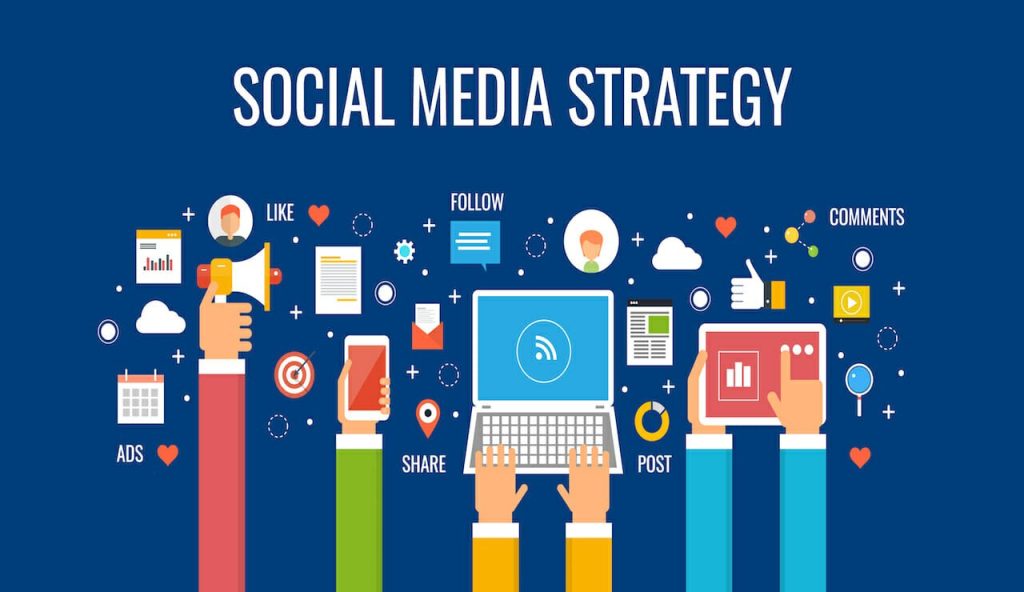Using Social Media : Create an impactful marketing plan using social media. Learn the steps, strategies, and best practices for leveraging platforms like Facebook, Instagram, and LinkedIn to maximize your business’s growth.”

Introduction
In today’s digital world, creating a marketing plan using social media is essential for businesses aiming to expand their reach and boost engagement. With billions of users across various platforms like Facebook, Instagram, Twitter, and LinkedIn, social media offers unparalleled opportunities for businesses to connect with their audience. This article will guide you through crafting an effective social media marketing plan that aligns with your business goals and helps you achieve measurable success.
Why Social Media Marketing is Crucial
Social media is not just a tool for staying connected with friends and family; it’s a powerful marketing channel that can drive traffic, generate leads, and build brand awareness. According to Statista, social media penetration worldwide has surpassed 4.2 billion users in 2023, a figure that continues to grow. For businesses, this means a vast potential audience ready to be engaged.
By leveraging the right platforms and creating a tailored strategy, businesses can create strong connections with their audience, build credibility, and boost sales.
1. Set Clear Objectives
The first step in any successful marketing plan using social media is defining clear and measurable objectives. Whether you aim to increase brand awareness, drive website traffic, or generate leads, your social media strategy must be aligned with your business goals.
Tip: Set SMART (Specific, Measurable, Achievable, Relevant, Time-bound) goals to track your progress effectively.
2. Choose the Right Platforms
Not all social media platforms are created equal. Depending on your target audience, some platforms may be more effective than others. Here’s a breakdown of popular platforms and their uses:
- Facebook: Great for building brand awareness and engagement through posts, ads, and groups.
- Instagram: Ideal for visual brands, showcasing products, and using influencer marketing.
- LinkedIn: Perfect for B2B marketing, networking, and sharing thought leadership content.
- Twitter: Useful for real-time engagement, trends, and news updates.
Focus your efforts on the platforms where your target audience is most active.
3. Understand Your Audience
Understanding your target audience is key to tailoring your content and approach. Create buyer personas that include details such as demographics, interests, online behavior, and pain points.
Tip: Use tools like Google Analytics, Facebook Insights, and Twitter Analytics to gather data about your audience’s preferences and behaviors.
4. Content Strategy: Create Valuable Content
Content is the backbone of your social media marketing plan. Your posts should not only be consistent but also offer value to your audience. Here are some content ideas:
- Educational posts about your products or industry
- User-generated content to build community and trust
- Behind-the-scenes content to humanize your brand
- Interactive content like polls, quizzes, or challenges
Tip: Use a content calendar to plan your posts ahead of time, ensuring consistency.
5. Paid Social Media Advertising
While organic reach is valuable, paid social media advertising can help you reach a broader audience. Platforms like Facebook and Instagram offer robust ad targeting options, allowing you to reach specific demographics, interests, and behaviors.
Tip: Start with a small budget and test various ad formats (carousel ads, video ads, stories) to see what works best.
6. Measure and Analyze Performance
An essential aspect of your social media marketing plan is the ability to measure and analyze your efforts. Use analytics tools such as Google Analytics, Facebook Insights, and Sprout Social to track key performance indicators (KPIs) like:
- Engagement rate
- Click-through rate (CTR)
- Conversion rate
- Return on investment (ROI)
This data will help you refine your strategy and achieve better results over time.
7. Engage With Your Audience
Social media is a two-way street. Engage with your followers by responding to comments, sharing user-generated content, and participating in relevant conversations. Building a community around your brand fosters loyalty and trust.
Tip: Create a dedicated team or assign a social media manager to ensure prompt responses to inquiries.
8. Influencer Marketing
Influencer marketing can be a powerful way to amplify your brand’s message. Partner with influencers in your niche who align with your brand’s values and audience. Influencers can create authentic content that resonates with their followers, driving more traffic and conversions to your business.
Tip: Start with micro-influencers to achieve more targeted engagement at a lower cost.
Conclusion
Incorporating a marketing plan using social media into your overall business strategy is no longer optional; it’s essential. By setting clear goals, selecting the right platforms, understanding your audience, and creating valuable content, you can enhance your brand’s presence and achieve long-term success. Don’t forget to measure your performance and continuously optimize your strategy to stay ahead of the competition.
For more tips and resources on building a successful social media marketing plan, visit Clientify Agency.
